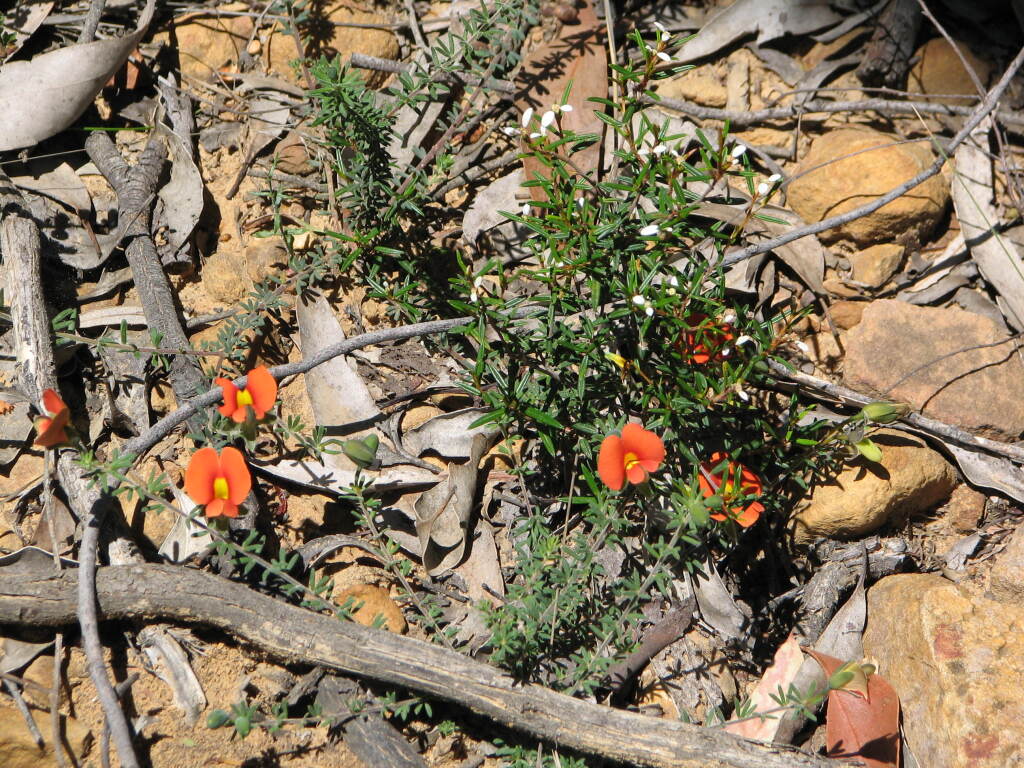Gompholobium ecostatum
Kuchel Dwarf Wedge-peaDecumbent to erect shrub, to c. 50 cm tall; stems wiry, covered with short spreading hairs. Leaves sessile, trifoliolate; leaflets linear, linear-lanceolate or linear-oblanceolate, 3–15 mm long, c. 1 mm wide, shortly petiolulate, glabrous or with short stiff hairs, margins revolute; stipules subulate, c. 1 mm long. Flowers 15–20 mm long, solitary or paired; pedicel to c. 10 mm long, as long as calyx. Calyx to c. 8 mm long, black, glabrous outside, lobes valvate, triangular-lanceolate, acute, nearly reaching base of calyx, not ridged at edges, inside margins tomentose; petals apricot to reddish, sometimes yellow; keel glabrous or, commonly, minutely ciliate along edges; ovules 15–20 in two rows. Pod obliquely ovoid, 10–12 mm long, c. 8 mm wide, turgid, glabrous, sessile; seeds numerous, reniform, c. 1 mm long, light-brown. Flowers Oct.–Mar.
LoM, Wim, GleP, Brid, VVP, GipP, OtP, WaP, Gold, GGr, DunT, WPro, HSF, OtR. Also SA, Tas. Scattered across southern Victoria west from Wilsons Promontory and extending inland as far as the Little Desert in the western part of the State. Found in heathland and heathy woodland, often on sandy soils.
The related New South Wales species G. minus Sm. differs in having consistently yellow flowers and vertical ridges along the junctions of the calyx lobes when in bud. Gompholobium ecostatum is imperfectly separated from G. huegelii, which is generally distinguished by its yellow petals, distinctly ciliate margins of keel petals, and usually glabrous stems.
Jeanes, J.A. (1996). Fabaceae. In: Walsh, N.G.; Entwisle, T.J., Flora of Victoria Vol. 3, Dicotyledons Winteraceae to Myrtaceae, pp. 663–829. Inkata Press, Melbourne.
 Spinning
Spinning
